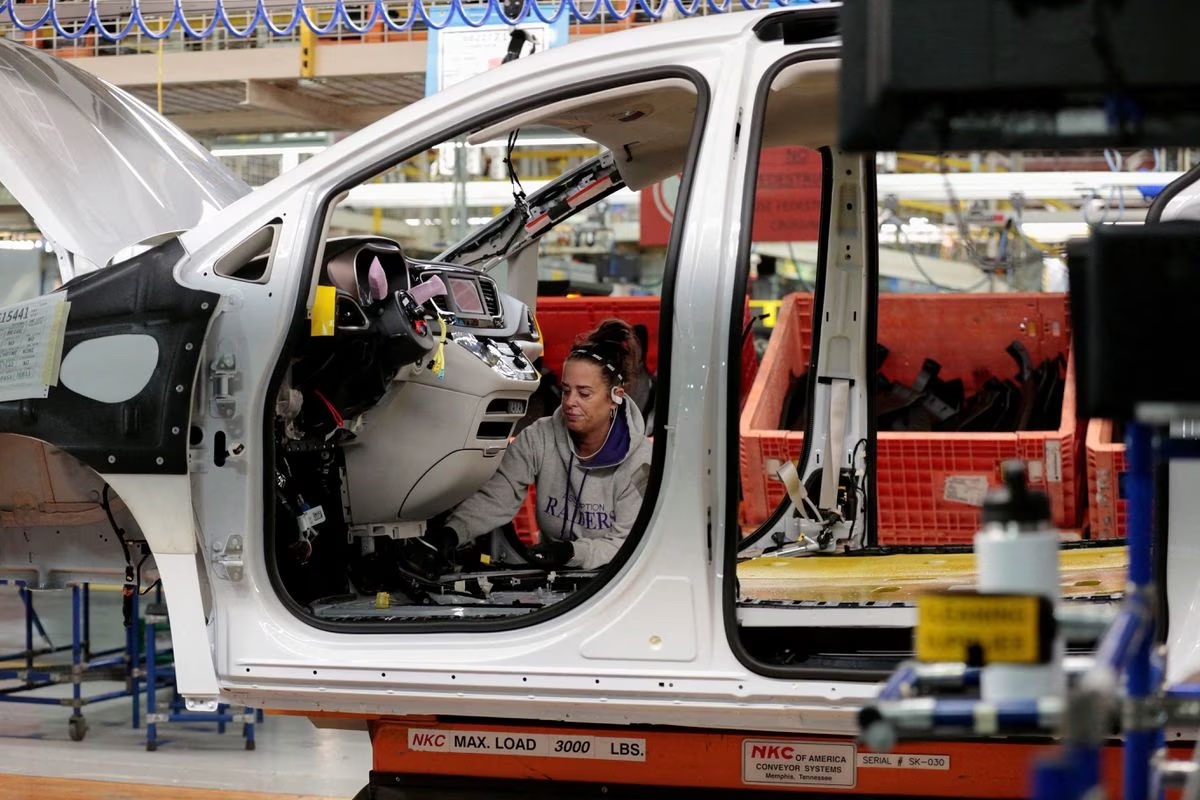- Adj EBIT rose 17% in H2 to 10.949 bln euros
- FY margin on adj. EBIT at 13%
- Co announced 1.34 euro per share dividend
- To launch 1.5 bln euro buyback programme
- Guided for double digit margin, positive cash in 2023
MILAN, Feb 22 (Reuters) – Carmaker Stellantis (STLAM.MI) beat forecasts on Wednesday with a 17% rise in operating profit for the second half of last year, fuelled by savings from its founding merger and price increases that helped offset lingering supply chain problems.
The company, created just over two years ago from the merger of Fiat Chrysler and Peugeot maker PSA, also announced a share buyback programme worth up to 1.5 billion euros ($1.6 billion) for this year, supported by the more than 10.8 billion euros in industrial free cash flows it generated last year.
It will also pay a dividend of 4.2 billion euros on 2022 results, or 1.34 euros per share.
Milan-listed shares in the world’s third largest automaker were up 2.1% at 1000 GMT, outperforming a 0.8% fall in Italy’s blue-chip index (.FTMIB).
Adjusted earnings before interest and tax (EBIT) came in at 10.95 billion euros for July-December, topping analysts’ consensus estimate in a Reuters poll of 9.63 billion euros.
The margin on adjusted EBIT was 12% in the second half, down from 14.1% in the first six months of the year. But the company still met its target for a “double digit” margin last year.
It reiterated the same margin target for 2023, as well as one for positive cash flows.
“We have a strong set of products, good commercial performance and technology to sustain double digit margin (on adjusted EBIT) in 2023,” Chief Financial Officer Richard Palmer said.
Analysts at JP Morgan described results as “strong” and the outlook for 2023 as “solid”, adding the share buyback announcement was unexpected.
Stellantis said it had achieved cash synergies of 7.1 billion euros last year, far exceeding in advance the 5 billion euro target by 2024 it set at the time of the merger.
“This speaks to the fast conversion and execution of the team within Stellantis organisation,” Palmer said.
He added results were also helped by good growth in global sales of electric vehicles, pricing power and a positive forex effect, “despite various challenges in the marketplace, with semiconductors, logistics, raw materials, energy and inflation”.
Increased industrial costs had an overall impact on the group’s results last year of over 9 billion euros.
Inflation was expected to be lower this year, reducing the room for increases in selling prices, Palmer said.
“Our price increases were substantial in 2022, they will not be as significant this year,” he said.
Vehicle deliveries fell 2% last year, mainly due to semiconductors and logistics constraints, especially in Europe.
“Challenges continue in securing capacity for (vehicle) outbound transportation: initially it was from plants to compounds and from compounds to dealers. We’ve largely resolved the issue from plants to compounds but it continues on the constraints we have from compounds to dealers,” Palmer said.
“Semiconductors continue to be a problem, I don’t think the situation will be fully resolved in 2023,” he added.
($1 = 0.9393 euros)










